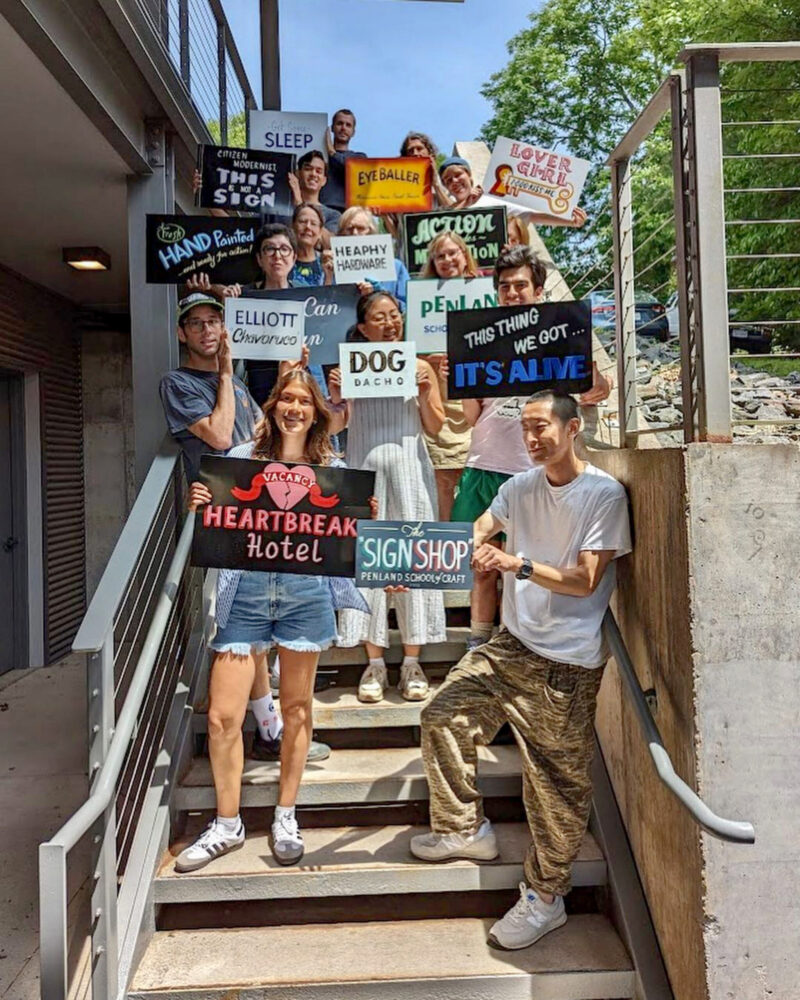 Generous instructors exploring their craft with students of all ages and all levels
Generous instructors exploring their craft with students of all ages and all levels
“Brush Lettering and Sign Painting” with Jon Bocksel and Kenji Nakayama
Friends and Collaborators
Jon Bocksel and Kenji Nakayama, co-instructors of summer session three workshop “Brush Lettering and Sign Painting” are friends, collaborators, and kindred spirits when it comes to their creative practices. Both are sought-after sign painters and fine artists with a focus on lettering. They met about 10 years ago as participating artists in a group show. Perceiving a kinship between their work, the curator made a point of introducing them.
“At the time,” said Jon, “I had a gold leaf job in about three weeks. I was pretty nervous about it, so I asked Kenji if he would be willing to work with me…. So we worked together and stayed up late and had a lot of fun and made a lot of jokes, and we became good friends.” Since that time, the pair has continued to work together, keeping in touch despite a four-hour journey between them. In the summer of 2022, they had a two-person show at the same gallery where they first met.
When Penland approached Kenji about teaching a workshop, he knew immediately that he would like to collaborate with Jon. “When it comes to letters,” said Kenji, “we agree.” Both are interested in single stroke and legible letters. Informed by calligraphy and ancient lettering, their practices focus on the kinesthetics of brush strokes and embrace the beauty of the human hand. Neither focuses their efforts on decorating and filling in the negative space, preferring instead to allow the letters to speak for themselves.
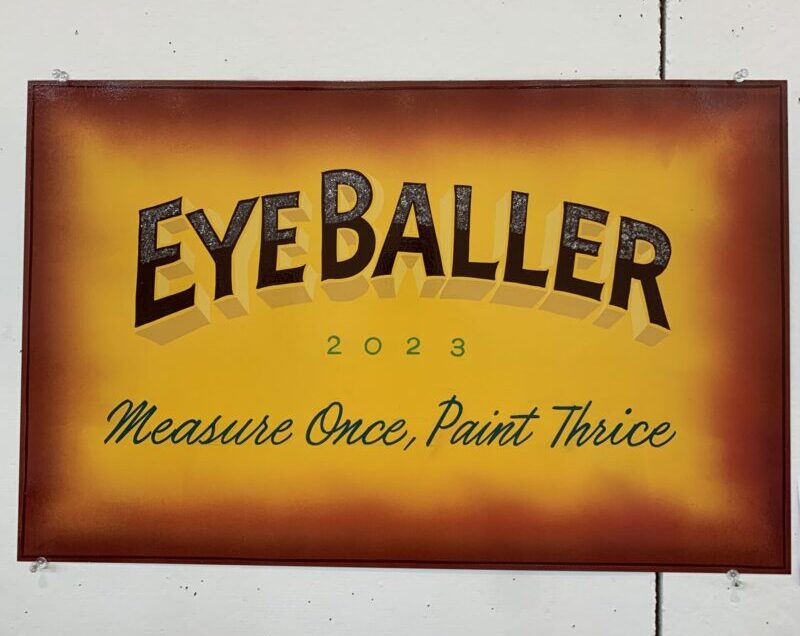
“Eyeballer,” a collaboration between instructors Jon Bocksel and Kenji Nakayama, including crushed mica collected from the North Toe River near Penland. The piece was donated and auctioned off in support of Penland’s scholarship program.
 Co-instructors
Co-instructors
For two weeks at Penland, Jon and Kenji demonstrated techniques, guided their students, and made several collaborative pieces. The workshop focused on brush-written letters and sign-trade techniques, with lots of hands-on exercises to help students improve their “eyeballing” skills, sensitivity to shapes and lines, and light/dark balance. As with any Penland workshop, this class was immersive; students focused exclusively on brush lettering and sign painting, improving quickly over two weeks. Students in the class could not say enough nice things about Jon and Kenji, noting their clear instruction, endless patience, contagious enthusiasm, and generosity with their time.
All ages and all levels
Jon and Kenji’s workshop was open to students of “all levels.” At Penland, this means that the class accommodates beginners, intermediate, and advanced students. Beginners are introduced to a whole new practice and intermediate and advanced students further their skills. “The group really gelled,” said L.A., who has taken a number of Penland workshops. “Even though we are different ages, different backgrounds… that usually happens here at Penland.” Studio assistant Andy Ferro remarked that working with some beginners allowed him to step back and articulate some of the foundational things that have become muscle memory in his sign painting practice. “You become aware of them again and reteach yourself,” he told us.
“They worked a miracle with me.”
“I had never really used a brush,” said Sally, a student in the class who is currently enjoying her retirement. On the last day of the workshop, Sally reflected on how far she had come as she placed the final touches on a metal sign reading “Be Still My Heart.” “Last Monday this was inconceivable,” she said, “and now they worked a miracle with me.”
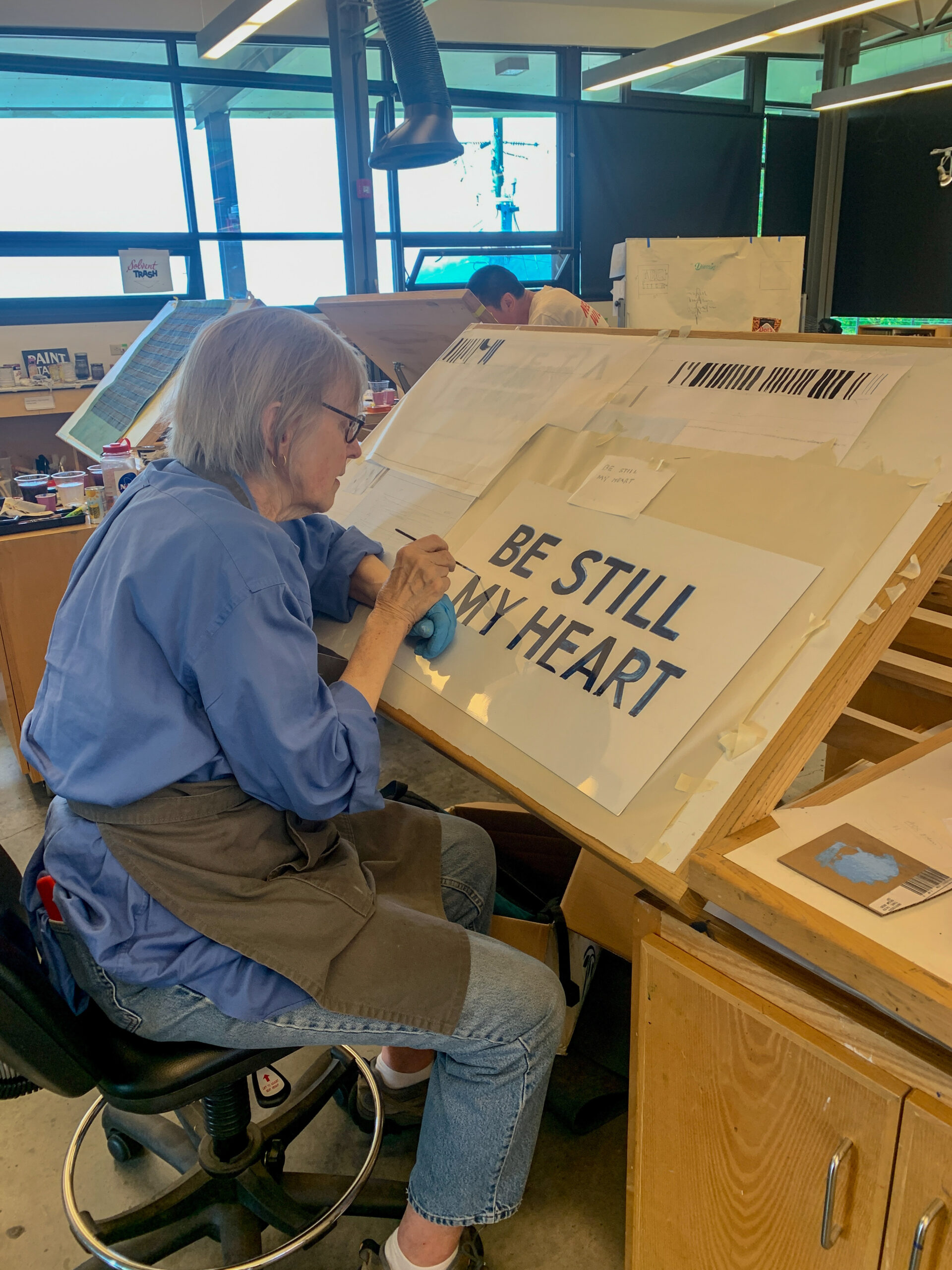 Sally went from never using a brush to creating work she is excited about.
Sally went from never using a brush to creating work she is excited about.
“Mom was so right about Penland.”
Perhaps the best illustration of the rich, intergenerational exchanges that happen at Penland was a mom and her twin children, recent college grads, who took the workshop together. L.A. has been coming to Penland for about 10 years (even relocating to the area about two years ago) and was excited to share the experience with two of her children. The family entered the class as peers and enjoyed competing with one another to create the best work they could.
“I wouldn’t say I was the most creative or artsy person, so I didn’t think I was going to love it,” said Jaya, L.A.’s daughter who recently graduated from the University of Pennsylvania. “But it has just been the most amazing and magical experience, and I understand why my mom loves this place so much and literally picked up her life to move down the road.” Jaya’s brother Naveen, who recently graduated from Trinity College, agrees. “We feel like this class and these teachers are insanely special,” he said. Soon, Jaya will move to Los Angeles. and Naveen to London. In the meantime, they plan to do a lot of practicing and expanding their newfound artistic outlet. “I am so glad we got to experience this together,” said L.A.
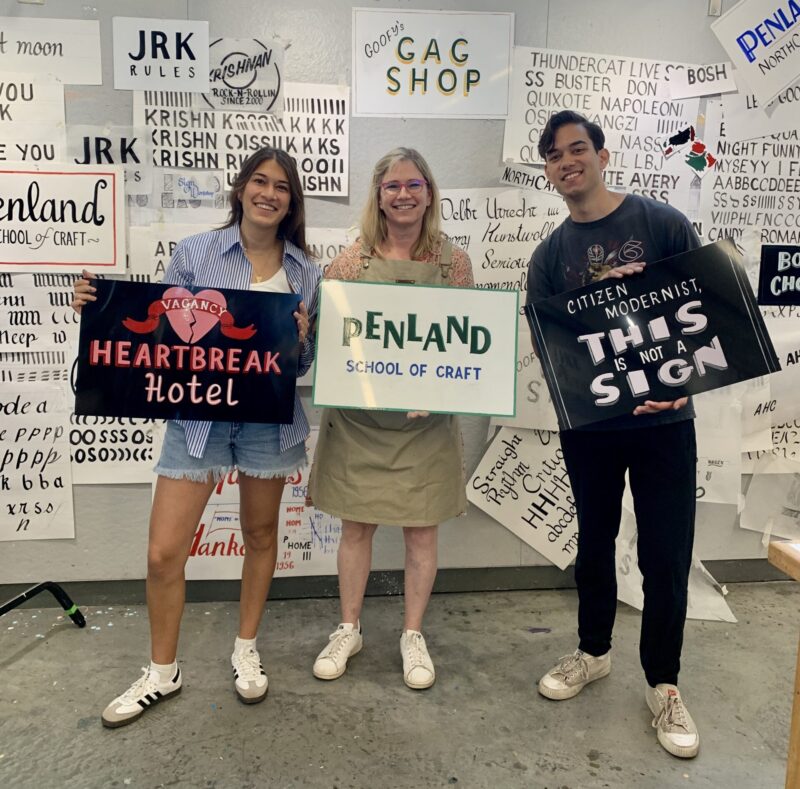 Left to Right: Jaya, L.A., and Naveen; two recent college grads took the workshop with their mom
Left to Right: Jaya, L.A., and Naveen; two recent college grads took the workshop with their mom
“We will all be able to make much more effective and beautiful signs.”
Studio assistant Andy Ferro, who first met Kenji four years ago when Kenji was the studio assistant for Andy’s first brush lettering workshop, experienced a full circle moment at Penland. These days, Andy is a sign painter in New York, often working alongside Jon.
For Andy, who is a big admirer of both Jon and Kenji’s work, the two-week workshop (where he was also a student) was a profound experience. Andy believes that the real strength of the class was the deep way in which Jon and Kenji were able to explain the importance of the balance of contrast, whether that be color value or stroke weight in the letter. “We will all be able to make much more effective and beautiful signs now,” he said.
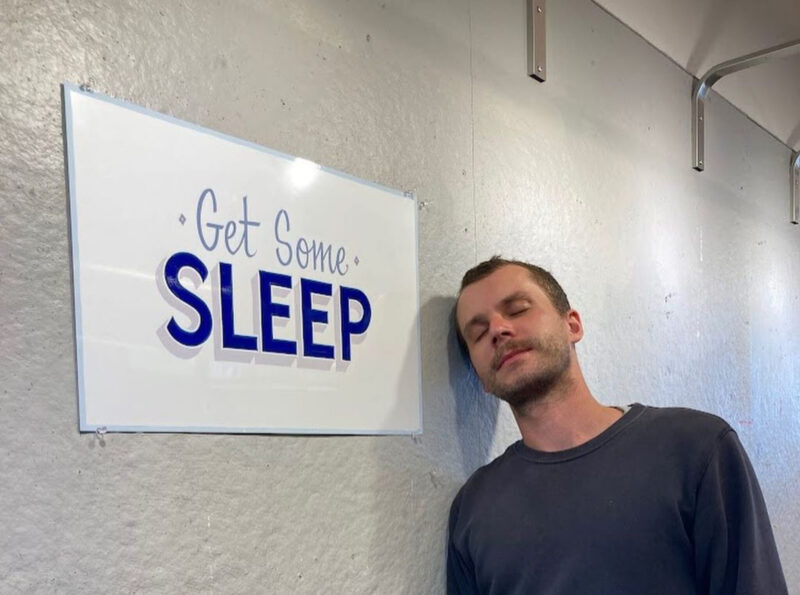
Studio assistant Andy Ferro learned so much from Jon and Kenji.

Jon and Kenji left behind some very helpful signage for the Drawing and Painting studio.


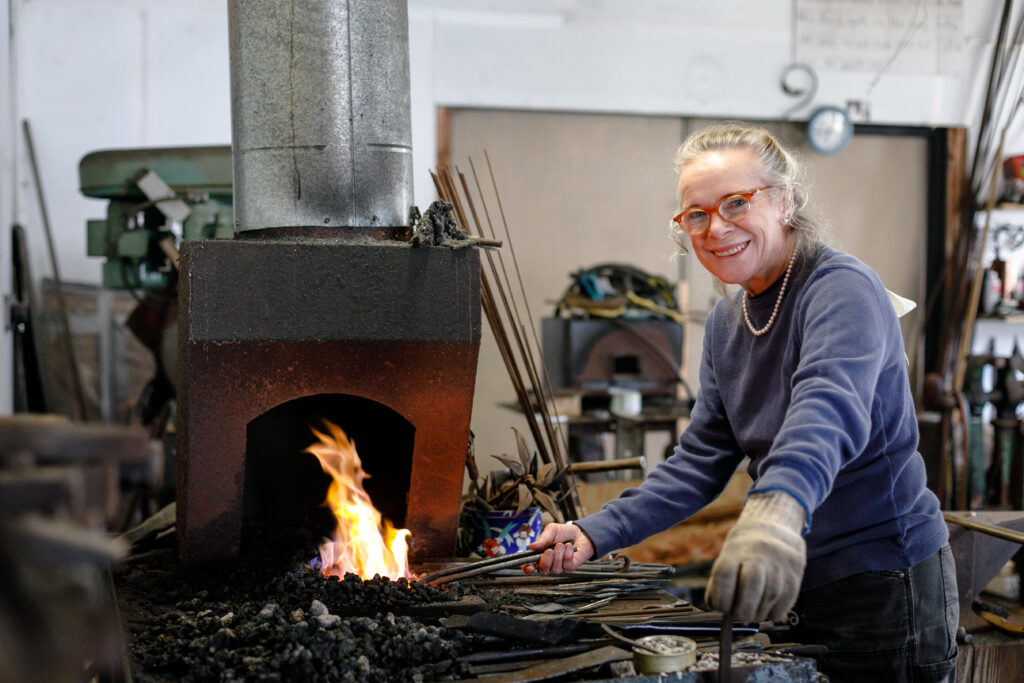
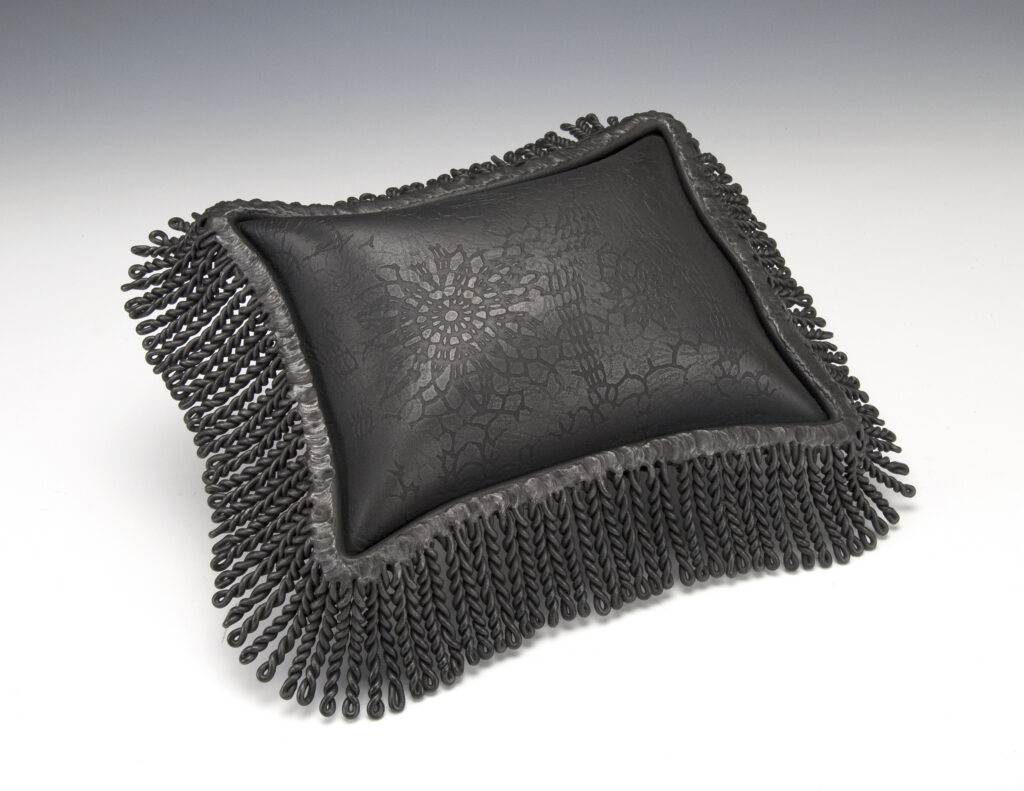
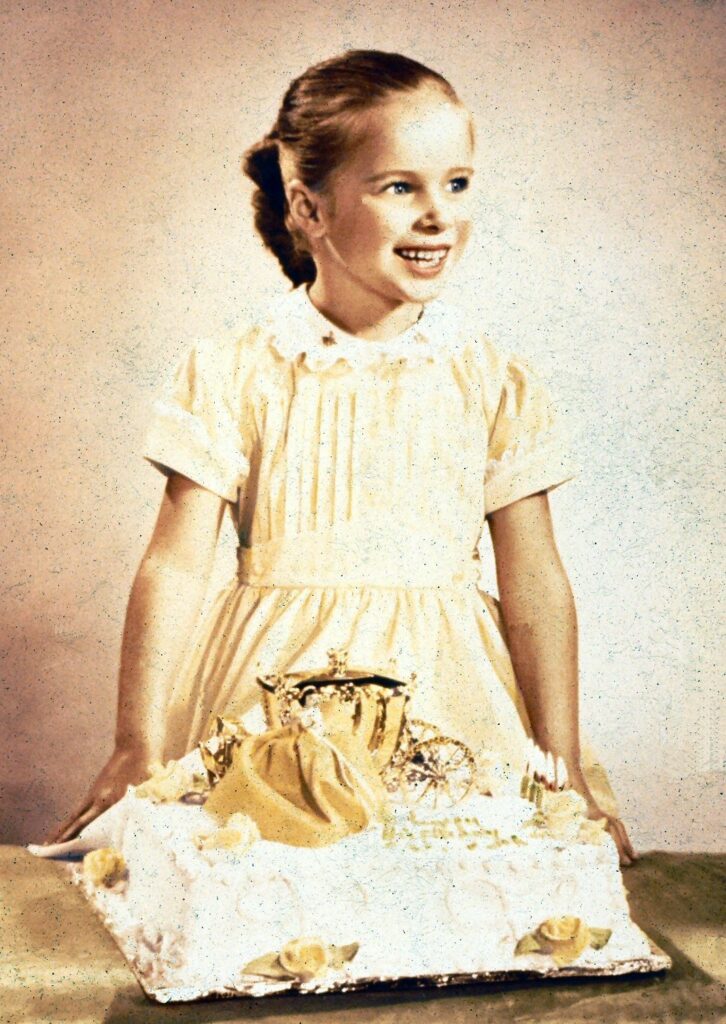
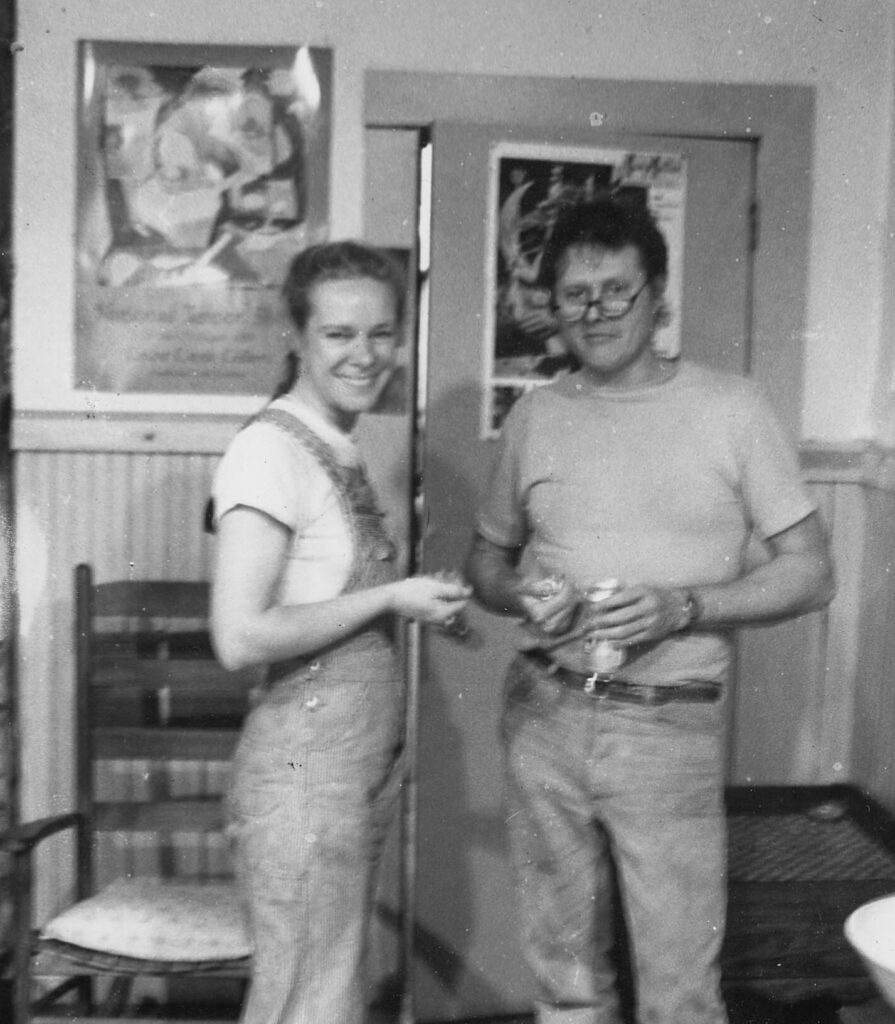
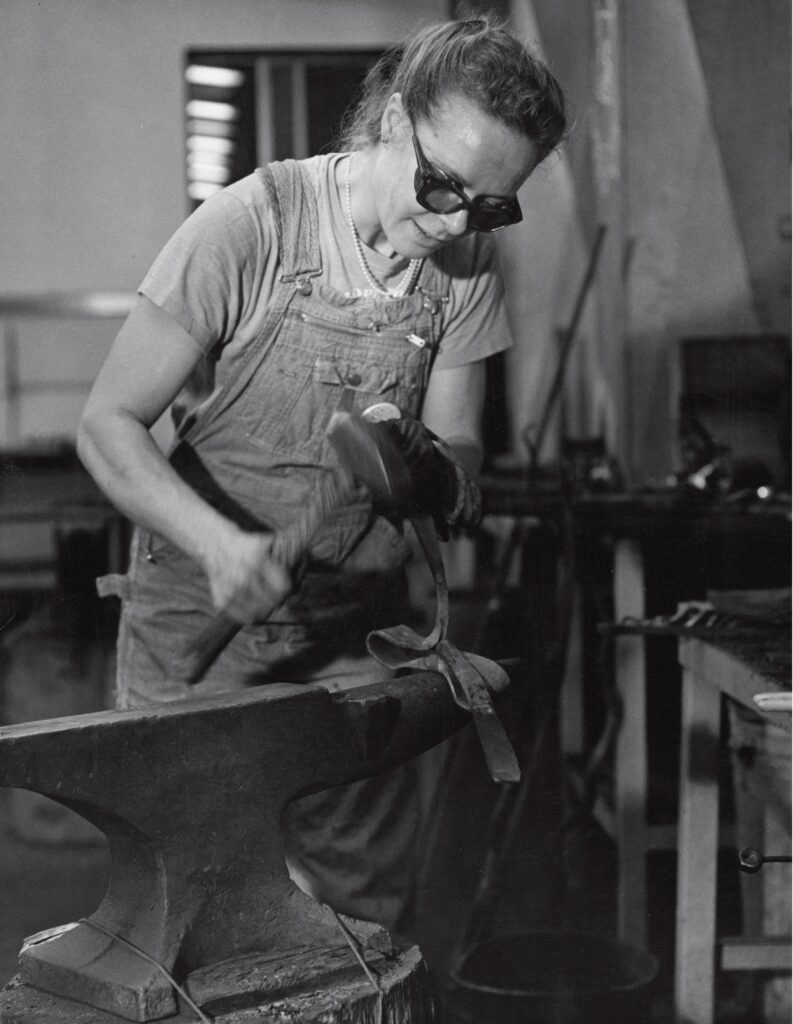
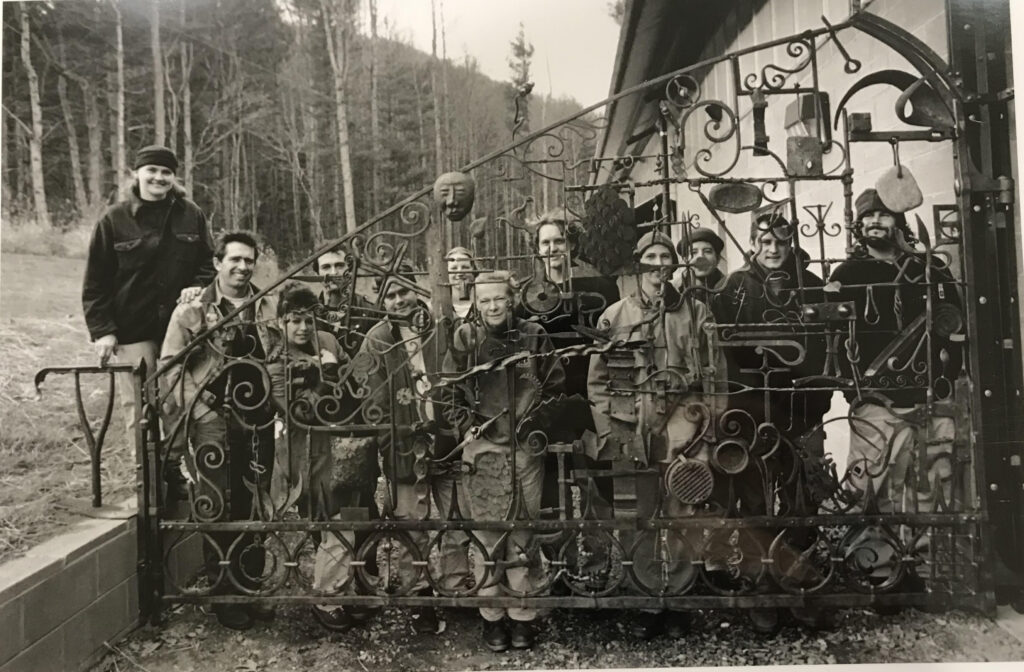
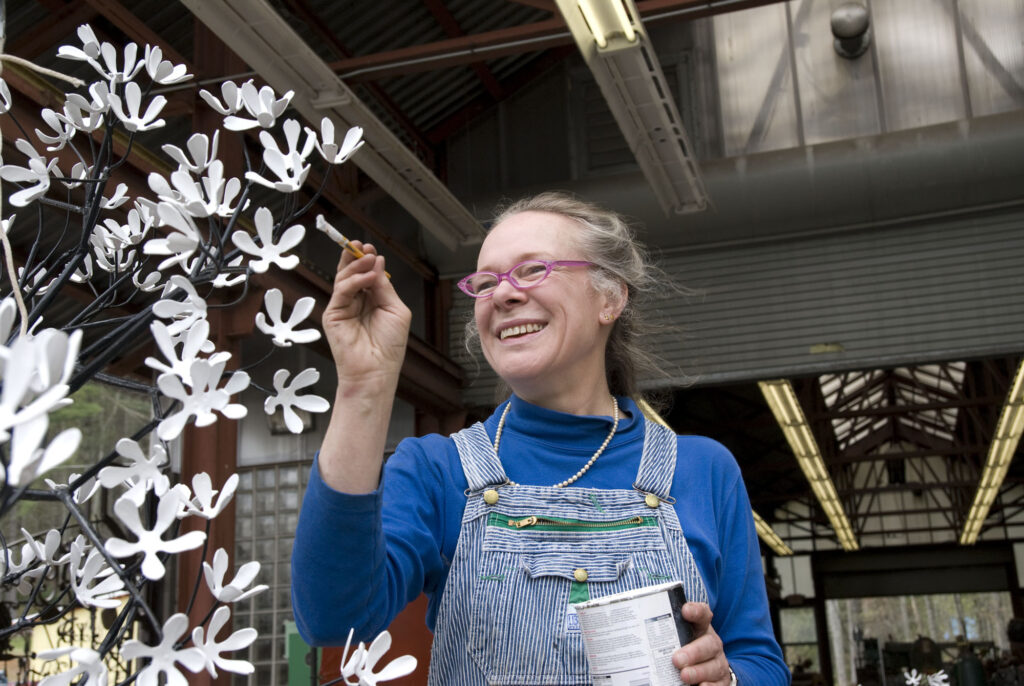
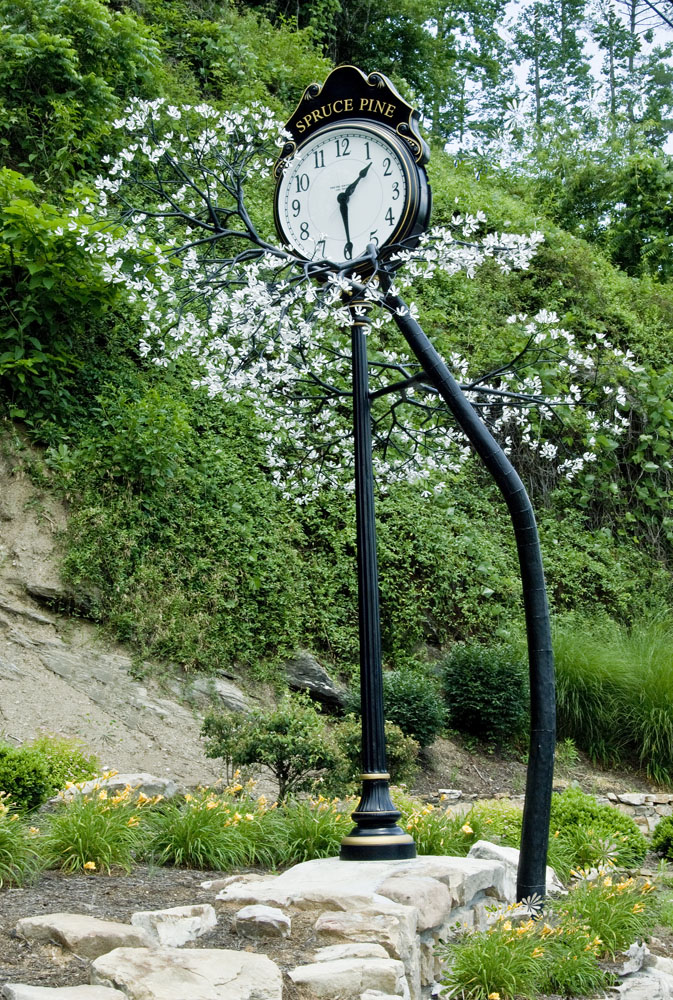
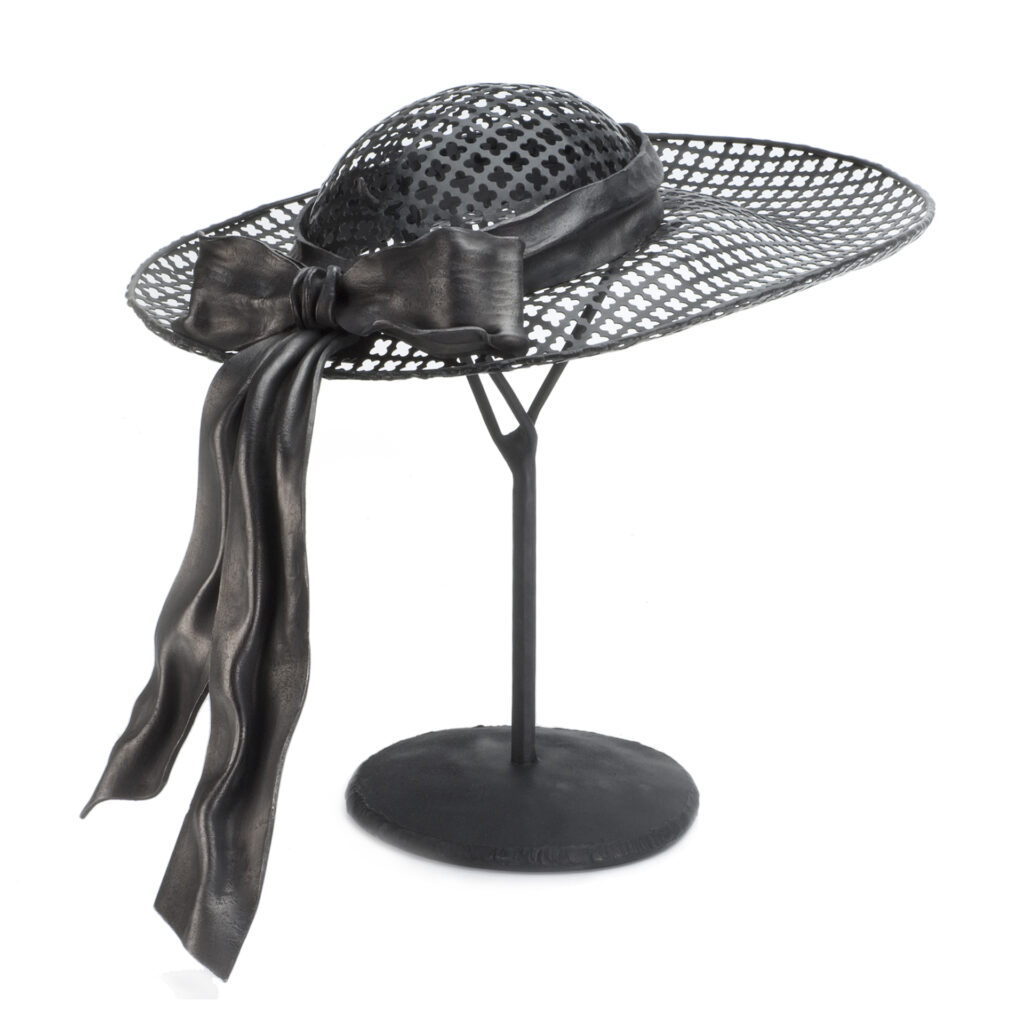
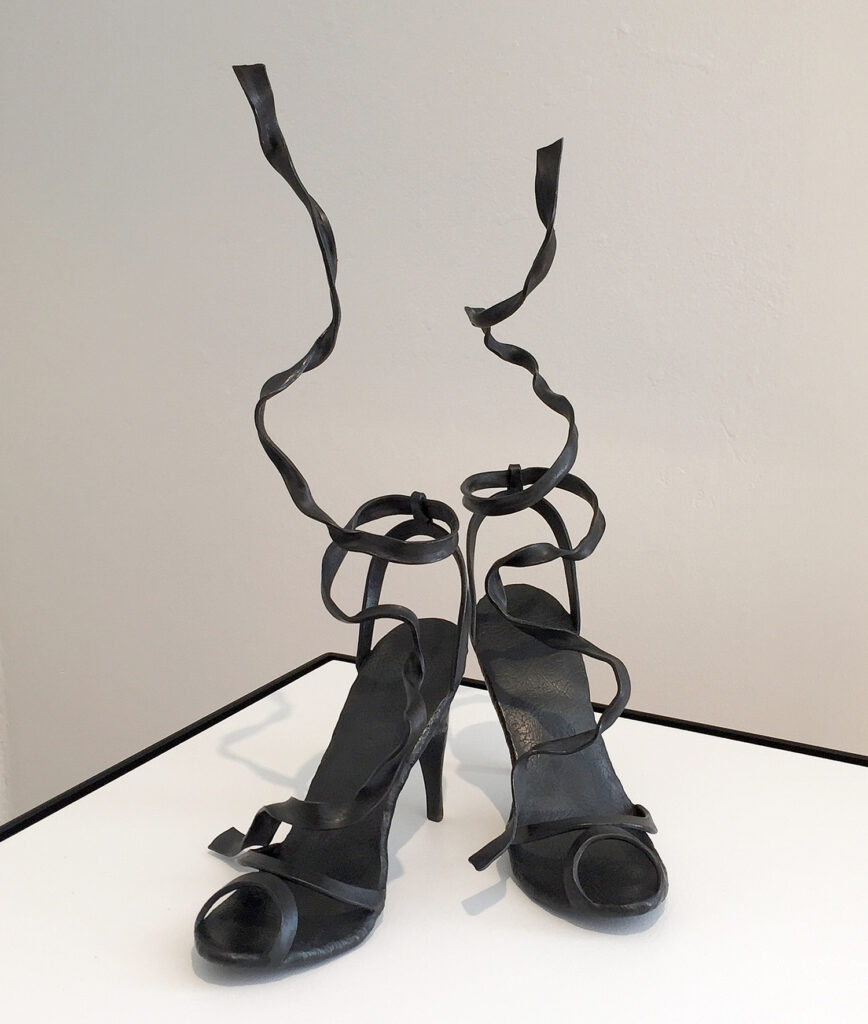

 Collaborating on great pottery designs
Collaborating on great pottery designs Custom chess set
Custom chess set Making knives
Making knives Participating in “Mending Day” with Celia Pym and her mending workshop
Participating in “Mending Day” with Celia Pym and her mending workshop “Free Painting Station”
“Free Painting Station” Visiting Mount Mitchell
Visiting Mount Mitchell